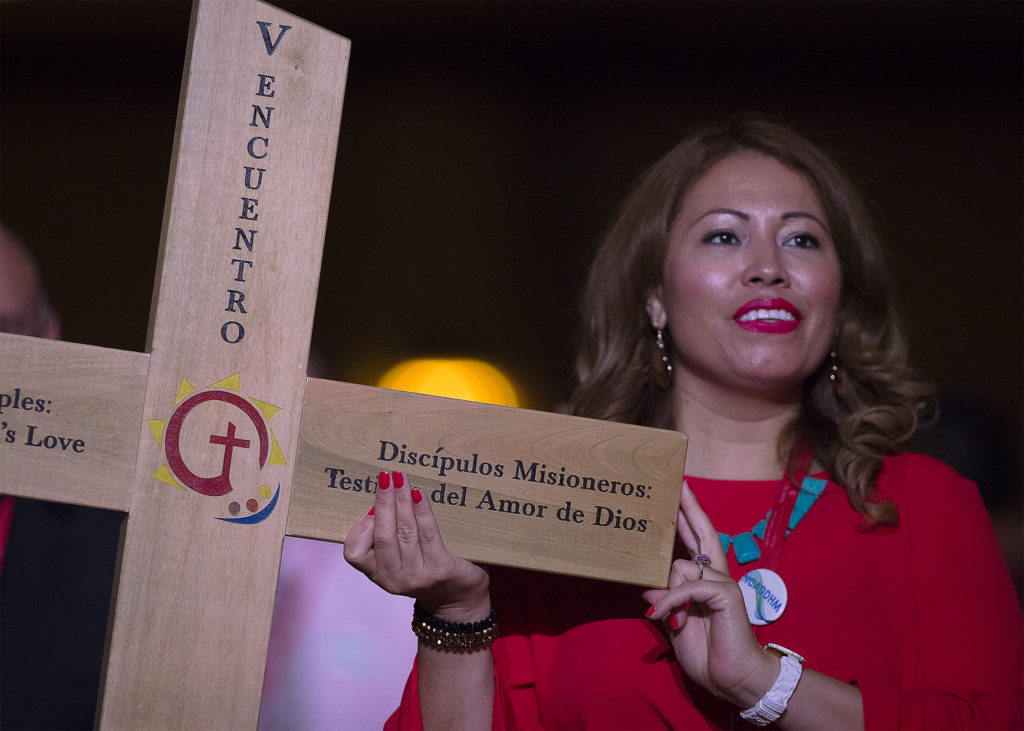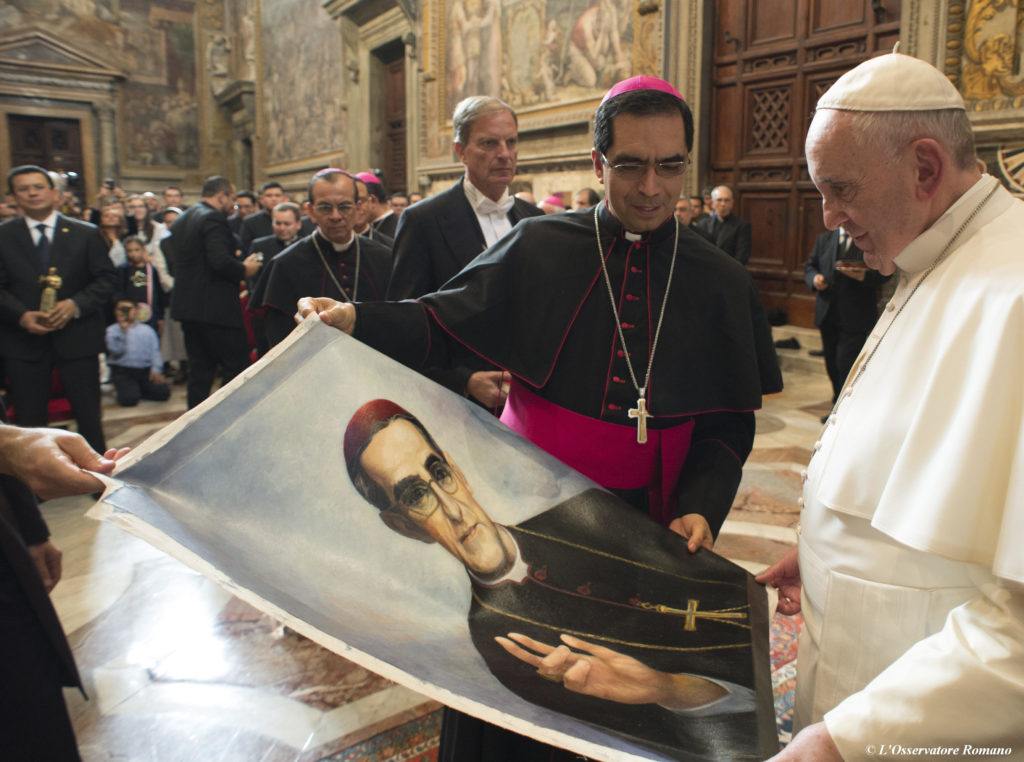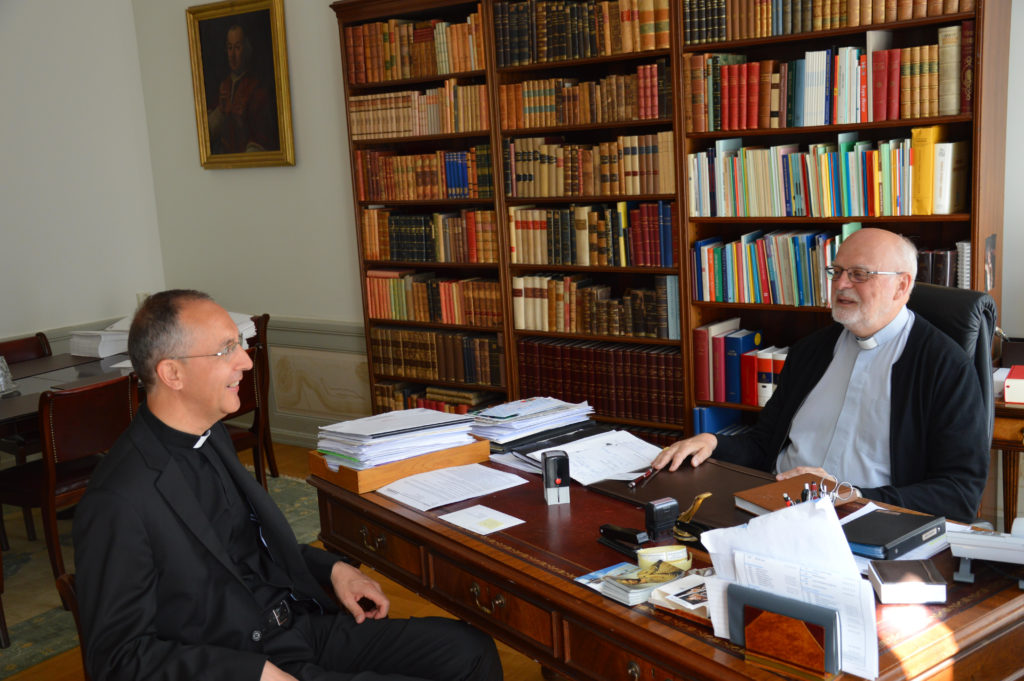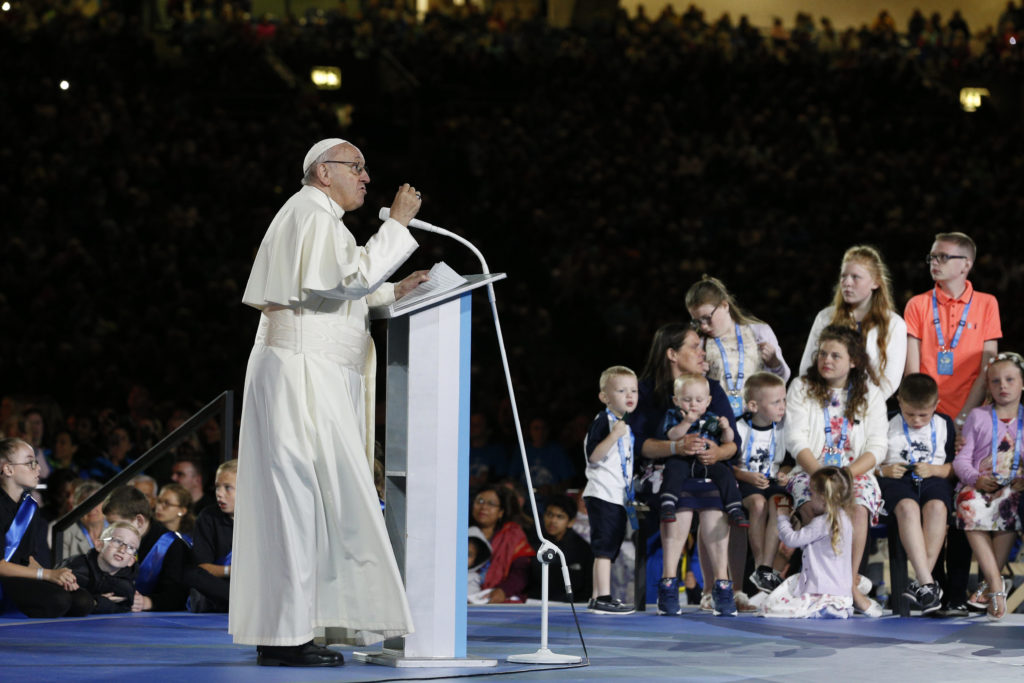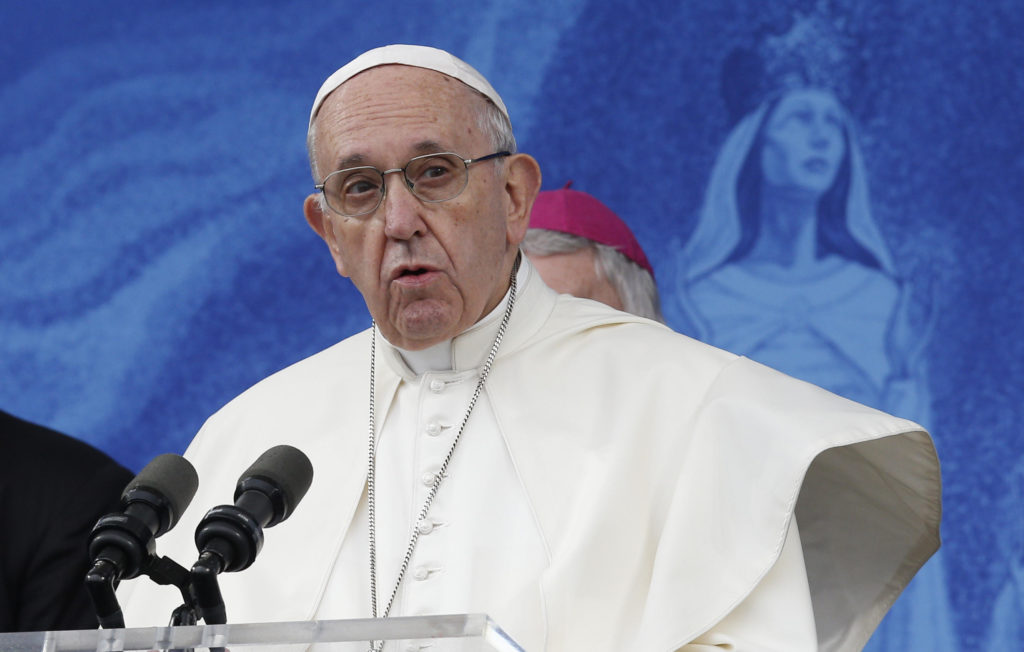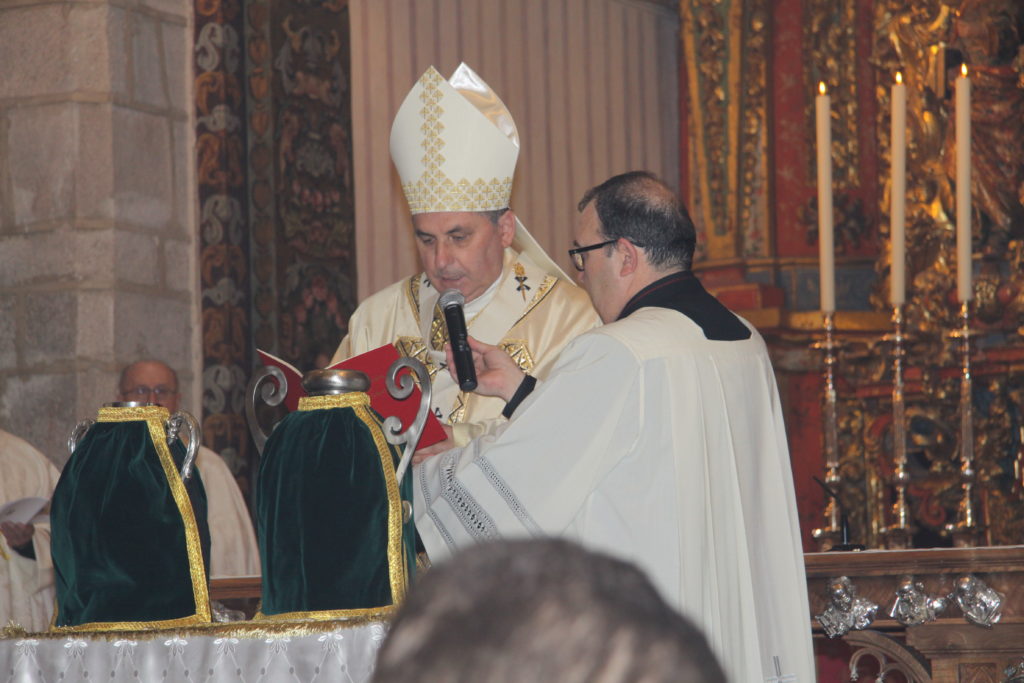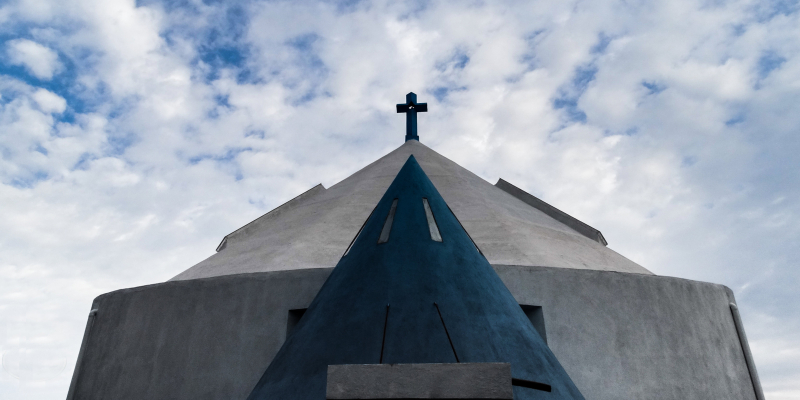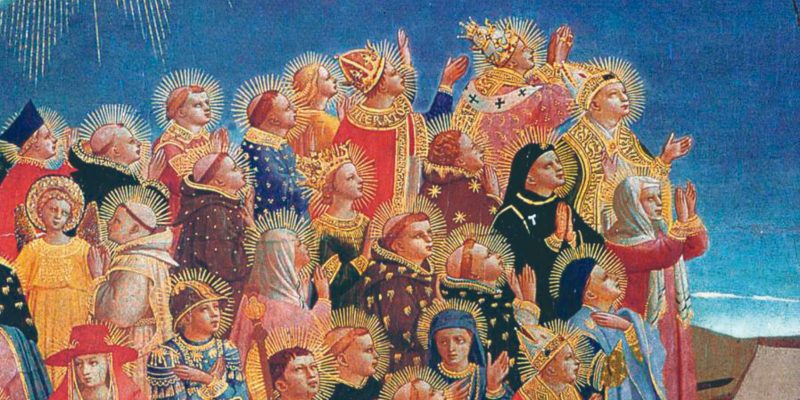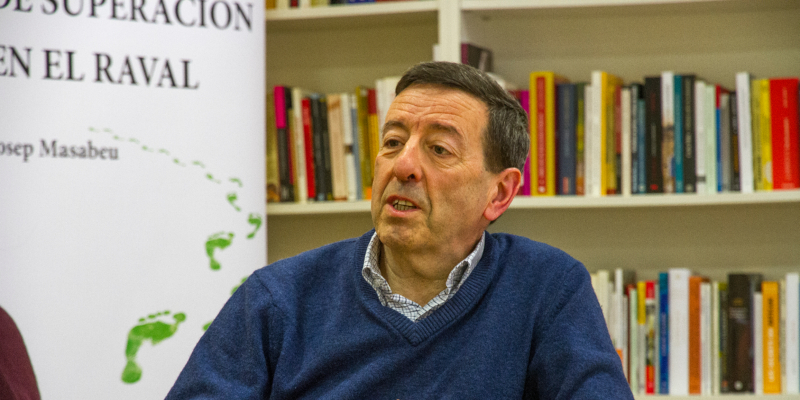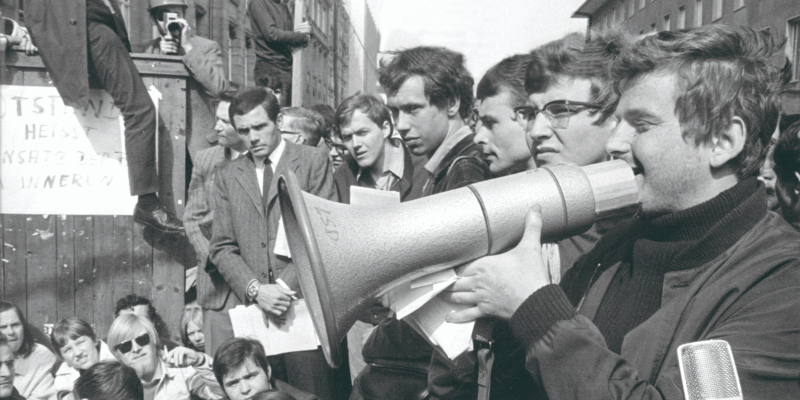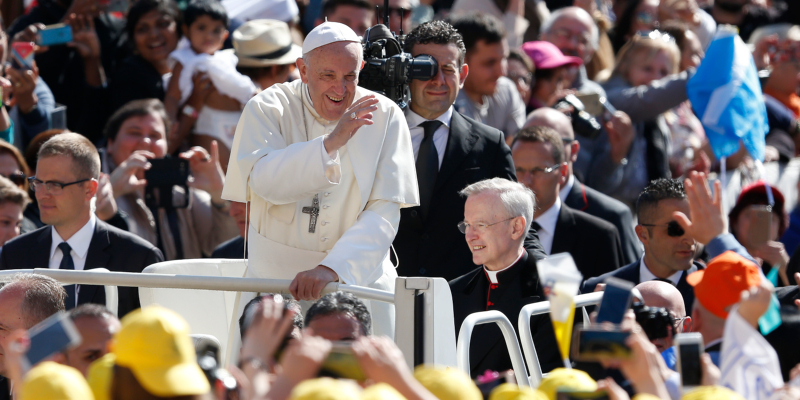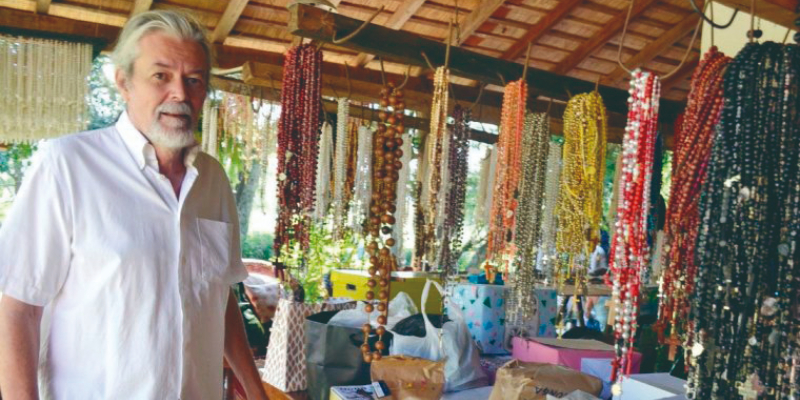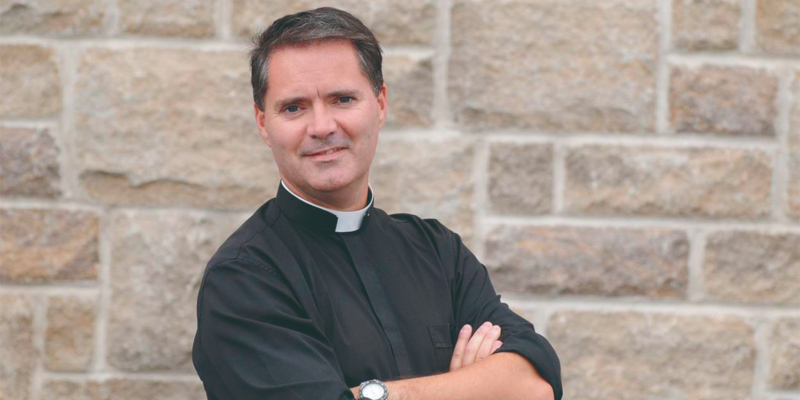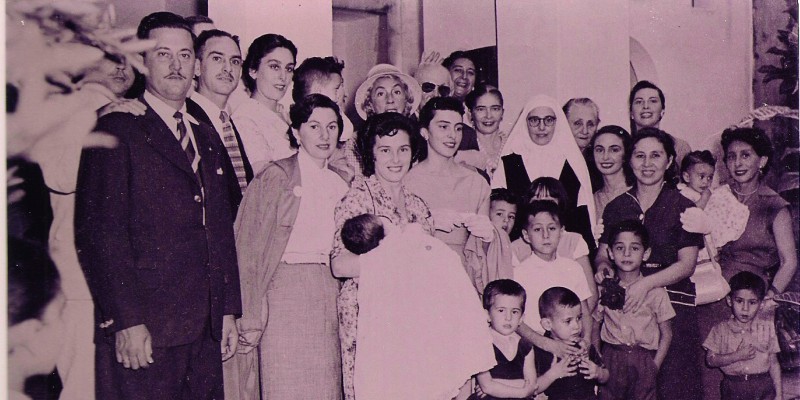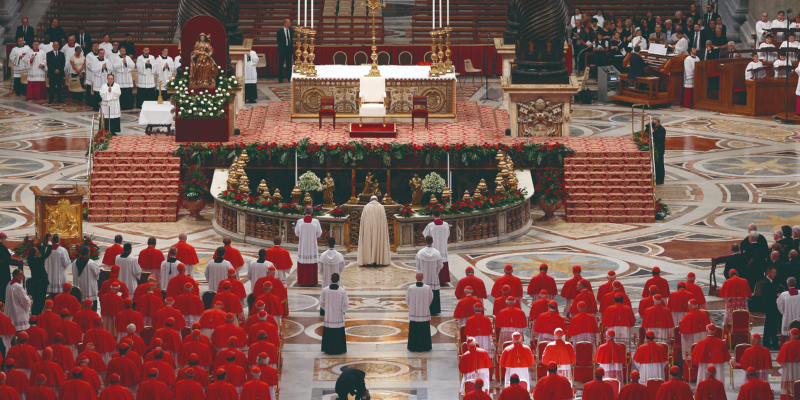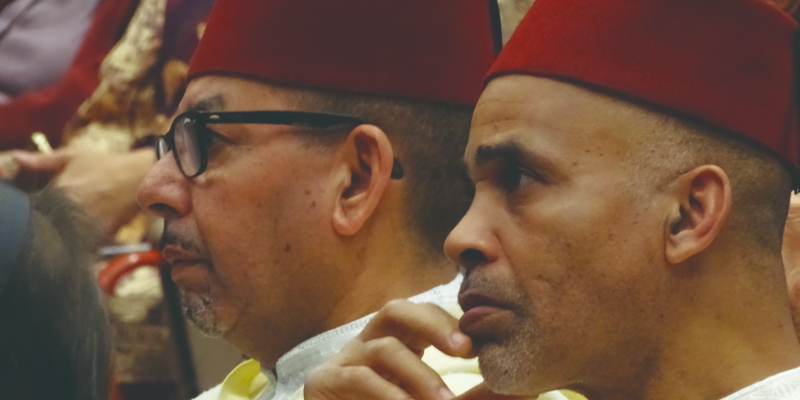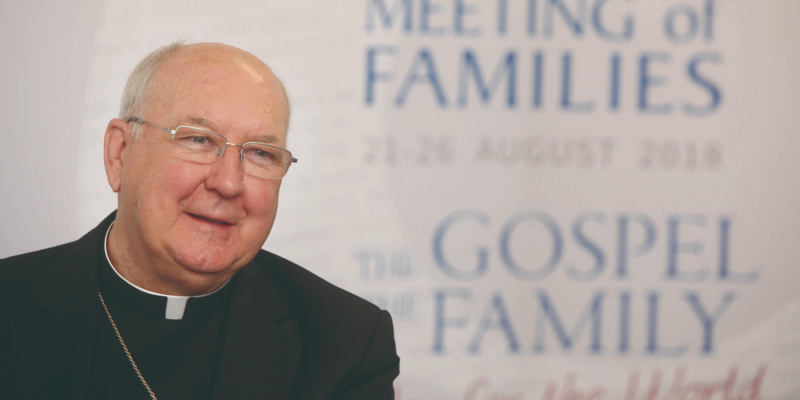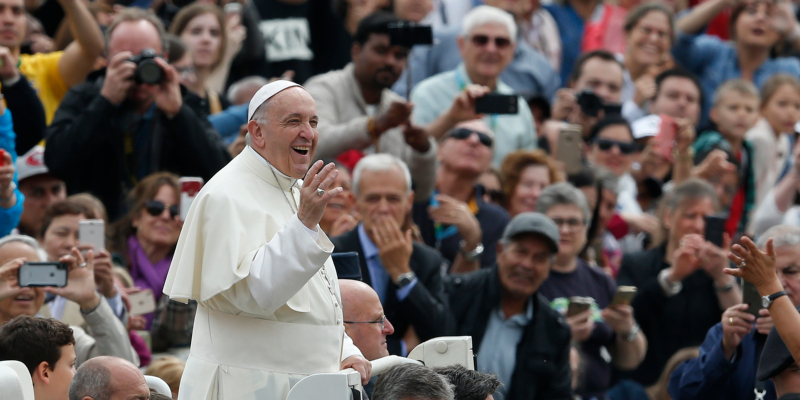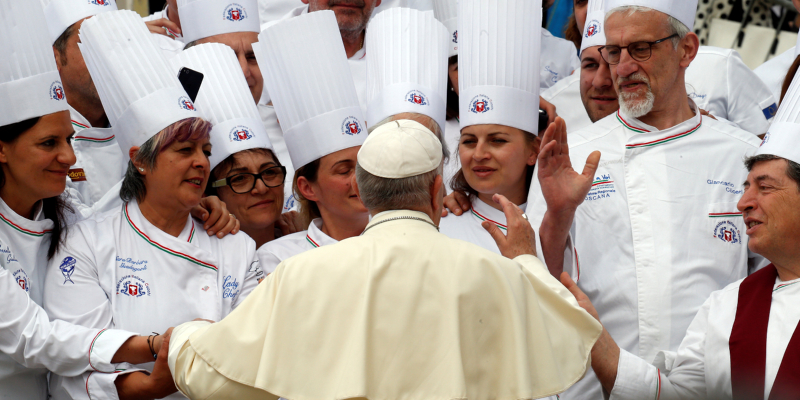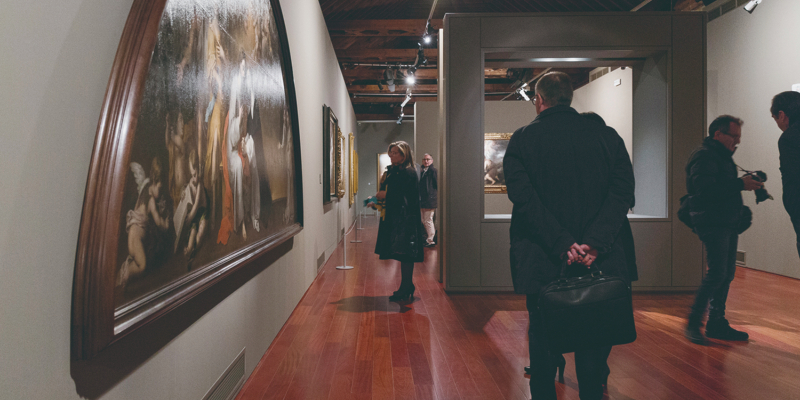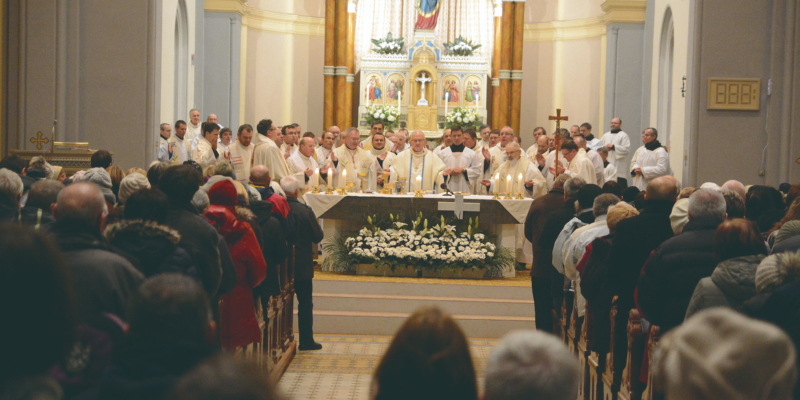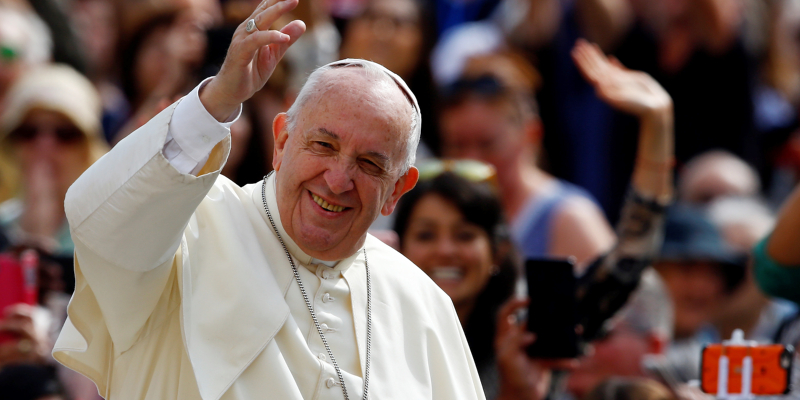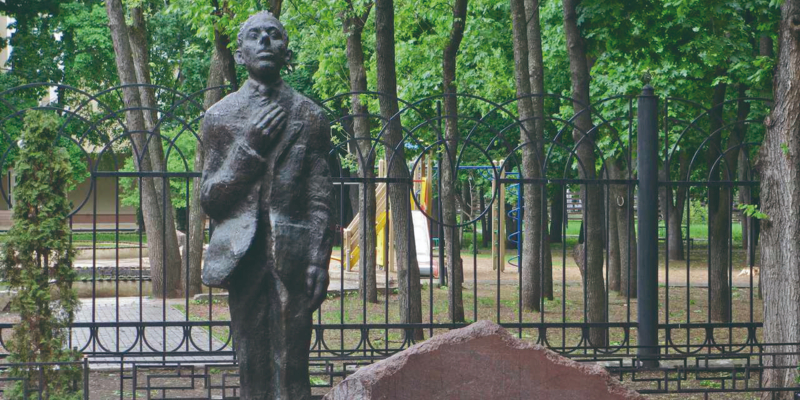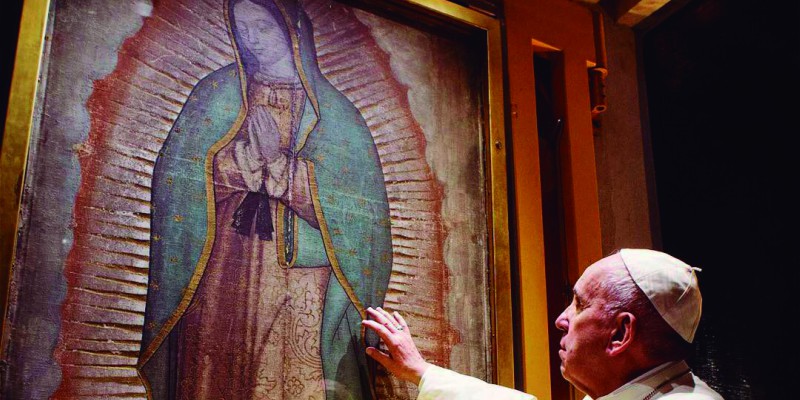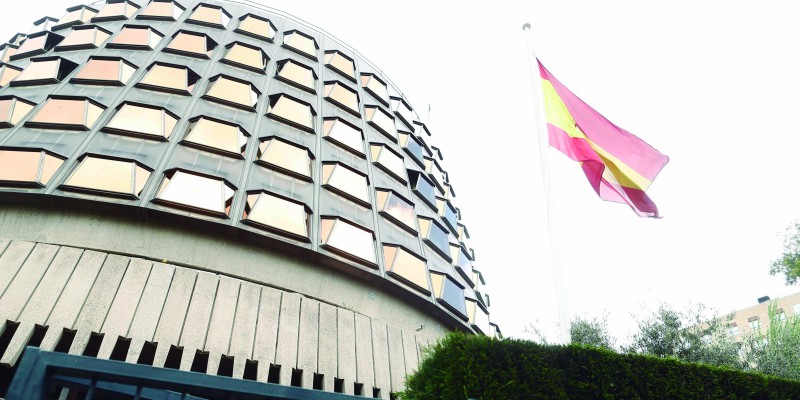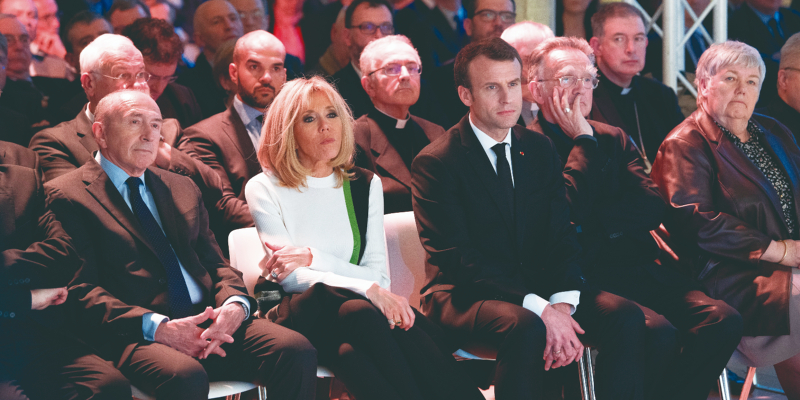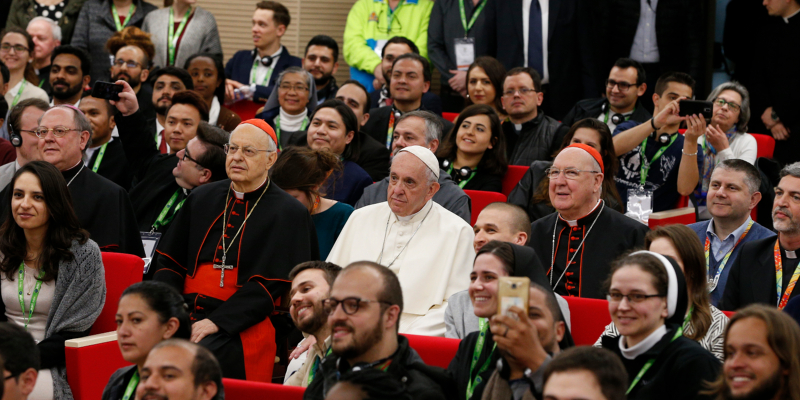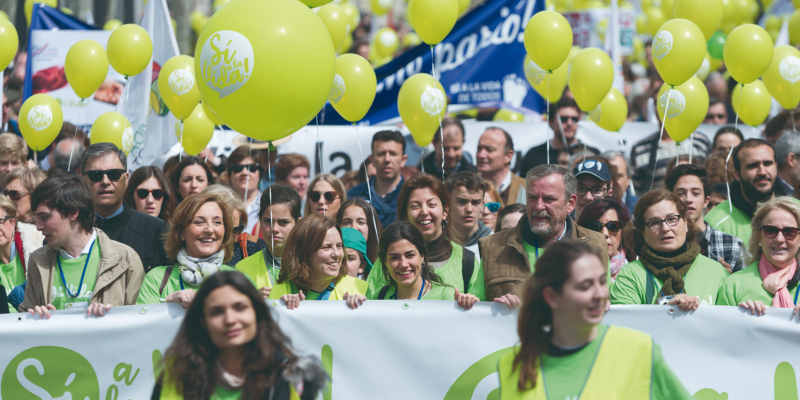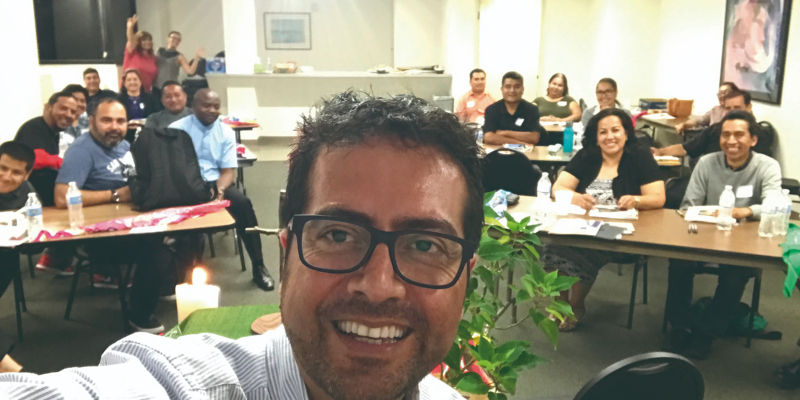It is the 50th anniversary of the encyclical Humanae Vitae, published by Blessed Paul VI on July 25, 1968. The Pope dealt with love and sexuality in marriage, and announced with prophetic vision the consequences if conjugal love was distorted by separating the unitive and procreative dimensions.
Text - Stéphane Seminckx, Brussels
Doctor of Medicine from the University of Louvain and Doctor of Moral Theology from the University of the Holy Cross.
We all dream of a great love. We all aspire to the ideal of founding a united family (or of responding to God's call with the total gift of celibacy). We all think that therein lies the key to happiness. But, as Pope Francis says in Amoris laetitia, "the word 'love,' one of the most frequently used words, often appears disfigured" (89). Many people speak of love without knowing what it is. This is why it is essential to get a true idea of love, through experience and also through prayer and reflection.
The encyclical Humanae Vitae, published in 1968 by Pope Paul VI, said no less when it stated in n. 9 that "it is of the utmost importance to have an accurate idea of conjugal love. We cannot spoil our life - or mortgage the future of the people entrusted to our care - by being mistaken about true love: "To deceive oneself in love is the most dreadful thing that can happen; it constitutes an eternal loss, for which one is not compensated either in time or in eternity" (Sören Kierkegaard).
Current message
For this reason, fifty years later, the message of Humanae Vitae is still very timely. This encyclical does not simply deal with contraception; it is above all an occasion to affirm in a decisive way the sublime grandeur of human love, image and likeness of divine Love. At the time of its appearance, this document gave rise to a long series of debates and numerous tensions. For many Christians, it caused perplexity and incomprehension. Some then broke with the Church, either because they explicitly rejected its teaching, or because they abandoned religious practice, or because they tried to live their faith with their backs turned to the Church.
Since then, much water has flowed under the bridges. Spirits have calmed down, often paying the price of indifference. Today we can examine the question with more serenity and, in my opinion, we have a duty to do so: the coherence of our human and Christian vocation is at stake.
Pope Francis invites us to do so when he speaks of "rediscovering the message of Paul VI's encyclical Humanae Vitae" (Amoris laetitia, 82 and 222). St. John Paul II had already encouraged theologians to "to go deeper into the reasons for this teaching [of Humanae Vitae] is one of the most urgent duties of anyone engaged in the teaching of ethics or in the pastoral care of the family. In fact, it is not enough to propose this teaching faithfully and in its entirety, but it is also necessary to show the deeper reasons for it." (Speech, 17-09-1983).
This deepening is particularly necessary since the ideology of free sex, born in the 1960s, does not seem to have liberated sexuality. A growing number of women are tired of the pill and its many side effects on their body and psyche. They increasingly see contraception as an imposition from the male world.
Counterconception
At the level of international relations, birth control has become a weapon in the hands of the rich countries, which impose it on disadvantaged nations in exchange for their economic aid. At the same time, in these same developed countries, deeply marked by the contraceptive mentality, demography is experiencing a dramatic decline, which is confronting the West with immense challenges. Finally, many moralists believe that "contraceptive language" distorts communication between spouses to the point of encouraging an explosion in the number of divorces.
Parallel to this evolution, since 1968, many philosophers and theologians have worked on a better understanding of the doctrine of Humanae Vitae. Moreover, the magisterium of St. John Paul II has made an essential contribution to this reflection, as have Benedict XVI and Francis.
Why such lively reactions?
The mitigated reception that Humanae Vitae received can be explained in part by the historical context in which the encyclical appeared. The Church was then at the beginning of the so-called post-conciliar period. Civil society was going through the revolt of May '68, and the world was living in the psychosis of overpopulation.
The document was long overdue. Its recommendations challenged the conclusions of a group of renowned specialists (the so-called "majority" group, which broke away from the rest of the Pontifical Commission for Problems of the Family, Birth and Population, created by St. John XXIII in 1962), whose report would be leaked to many newspapers in April 1967.
But this context does not explain everything. It is above all the problems addressed by Humanae Vitae that are at issue. For it is a question of fundamental issues that concern everyone: human love, the meaning of sexuality, the meaning of freedom and morality, marriage.
In the Church, contraception has been reprobated since the first centuries of Christianity (in the 1930 encyclical Casti Connubii, Pius XI speaks of "a Christian doctrine handed down from the beginning and never interrupted"). However, until the end of the 1950s, it had always been identified - in a more or less confused way - with onanism (coitus interruptus) or with mechanical means that prevent the normal development of the sexual act (condom, diaphragm, etc.). For progestogens, discovered in 1956, make women infertile without interfering - at least apparently - in the development of the sexual act. Considered from the outside, a sexual act performed with or without the pill is exactly the same.
The precise question posed in 1968 was the following: does the pill deserve to be called "contraception"? For a certain number of theologians, the answer was and remains negative, because the pill does not disturb the conjugal act in its "natural" development. Moreover, they see in hormonal contraception a confirmation of human dignity, called to take advantage of the laws of "nature" by means of its intelligence. But what do "natural" and "nature" mean when speaking of the human person?
What has changed since 1968?
Blessed Paul VI wrote a rather short encyclical whose content is centered on a kind of axiom, which rests on a simple fact: by its nature, by the will of the Creator, the conjugal act possesses a unitive dimension and a procreative dimension, which cannot be separated. Like all axioms, this one is not subject to demonstration. The arguments supporting it will come later, essentially during the pontificate of St. John Paul II.
It has often been said that Humanae Vitae was a prophetic document, because of its number 17, where Pope Paul VI announces the possible consequences of the rejection of the vision of love proclaimed by the Church. It is striking to reread this number 17 today: the announcement of the increase in marital infidelity, of the general decline in morality, of the growing domination of men over women, of the pressures of rich countries on poor countries in terms of the birth rate... All this has come to pass.
Prophetic
But Humanae Vitae is prophetic, in my opinion, above all because of the axiom that the encyclical has placed as the foundation of its entire reflection: the unitive and procreative dimensions of the conjugal act cannot be separated without denaturalizing the love between spouses. This principle had already been evoked by Pius XI, but it was Paul VI who placed it at the root of his vision of conjugal love.
The thought of Karol Wojtyla/John Paul II has contributed much to explaining and enriching this vision. Since 1960, with his famous book Love and Responsibility, he focused the debate on the human person and his dignity, in particular on his vocation to make of himself a disinterested gift. The "law of gift" is for the Polish Pope the whole foundation of the ethics of marriage, of its unity, of its indissolubility, of the requirement of fidelity and of the necessary truth of every conjugal act.
Karol Wojtyla, as a conciliar father, contributed to the drafting of the Pastoral Constitution Gaudium et Spes, especially to the part dealing with marriage. With a group of Polish theologians, he sent a memorandum on the question of birth control to Pope Paul VI in February 1968, a few months before the encyclical was published.
Between September 1979 and November 1984, while he was Pope, he dedicated 129 Wednesday catecheses to what has been called the "theology of the body", a set of "theology of the body".reflections which [...] are intended to constitute a comprehensive commentary on the doctrine contained [...] in the encyclical Humanae Vitae."(St. John Paul II, Audience 28-02-1984).
He also took the initiative for numerous documents that deal extensively with or make important references to conjugal morality and the defense of life: the apostolic exhortation Familiaris Consortio (1981), the instruction Donum Vitae (1987) on respect for nascent human life and on the dignity of procreation, the Catechism of the Catholic Church (1992), the encyclical Veritatis splendor (1993) on fundamental morality, the Letter to Families (1994), the encyclical Evangelium Vitae (1995), etc.
Chastity is freedom
This magisterium of John Paul II has helped to clarify a number of essential points in the debate on Humanae Vitae.
In the first place, we can point to the notion of the person as a "unified whole" (Familiaris Consortio, 11): the Christian vision of marriage cannot be understood with a dualistic vision of man, where the spirit would represent the person while the body would be nothing more than an appendage, an "instrument" at the service of the spirit. We are one body and marriage is the vocation to give the "unified whole" that we are, so as to form "one flesh".
Then we can indicate the notion of chastity, understood as the integration of sexuality in the person, as the integrity of the person in view of the integrality of the gift (Catechism of the Catholic Church, 2337): the conjugal act is not morally good just because it conforms to certain physiological characteristics of the woman; it is good when it is virtuous, when reason orders the sexual tendency to the service of love. Chastity is freedom, self-mastery, mastery over one's own personality in view of the gift of self, with the richness of its physiological, psychological and affective dimensions.
The role of Veritatis Splendor
The contribution of St. John Paul II's encyclical Veritatis Splendor, which Benedict XVI considered one of the Polish Pope's most important documents, cannot be overemphasized.
Veritatis Splendor reminds us that conscience is not the creator of the norm, which would lead to arbitrariness and subjectivism, to the postulate of "autonomy" that prevails in most bioethical debates today, where the simple fact of desiring something is enough to justify it. Veritatis Splendor reminds us that conscience is a herald, that is, it proclaims a law, fully assumed, even if it comes from Someone else. True freedom consists in moving towards the good for its own sake, a good that conscience shows us, in the same way that a compass indicates the north. Conscience is like a free and responsible participation in God's vision of good and evil.
The conjugal act: total gift
The question of the object of the act is equally fundamental for understanding what the conjugal act is. It is not a simple sexual act, because in this sense adultery and fornication are also sexual acts, as is the contraceptive sexual act. If language uses different terms for an act that is at first sight identical, it is because, from the moral point of view, an act can have a different meaning, a different "object", and this object is the first element to be considered when judging the goodness of that act.
The conjugal act is defined by the will to signify, consummate or celebrate the total gift of one person to another. The contraceptive sexual act is the negation of this definition, because the person, by not giving his procreative potentiality, does not give himself entirely. This point is essential for understanding the doctrine of Humanae Vitae.
And it is, moreover, linked to the notions of human nature and natural law, which are at the heart of the great current philosophical debates. Many of our contemporaries reject the very idea of "nature" in the name of autonomy and a certain conception of freedom. John Paul II spoke of the rejection of "of the notion of what most profoundly constitutes us as human beings, namely the notion of 'human nature' as a 'real datum', and in its place has been put a freely formed 'product of thought' freely modifiable according to circumstances"(Memory and identity). Gender theory is an extreme manifestation of this rejection.
Respecting the nature of man
Benedict XVI asked himself: why demand respect for ecological nature and at the same time reject the innermost nature of man? The answer: "The importance of ecology is indisputable today. We must listen to the language of nature and respond to it coherently. However, I would like to seriously address a point that seems to me to have been forgotten as much today as yesterday: there is also an ecology of man. Man also possesses a nature which he must respect and which he cannot manipulate at will. Man is not only a freedom that he creates for himself. Man does not create himself. He is spirit and will, but also nature, and his will is just when he respects nature, listens to it, and when he accepts himself for what he is, and admits that he has not created himself. In this way, and only in this way, true human freedom is realized." (Speech in the Bundestag, 22-9-11).
We are creatures
The "true human freedom" is a created freedom, received incarnated, finite, inscribed in a being configured by a nature, a project, some tendencies: "...".Let us not fall into the sin of pretending to replace the Creator. We are creatures, we are not omnipotent. What has been created precedes us and must be received as a gift."(Amoris laetitia, 56). To be free will never consist in wanting to free ourselves from our nature, but rather in assuming personally, consciously and voluntarily, the tendencies inscribed in it. A freedom directed against our nature "would be reduced to the effort to free oneself" (Albert Chapelle).
Behind this objection, we can glimpse the questioning of our origin. The rejection of our own nature would be understandable if each of us were the consequence of a simple contest of circumstances, of a random collision of molecules, of a mutation or of a blind destiny, for then our existence would be absurd, without project or destiny. There would be reasons to revolt, to want to ignore or transform this nature, instead of receiving it as a gift.
But the reality is quite different. At the origin of our life there is a creative Love, that of a God who, from all eternity, has conceived us and brought us into being at a given moment in the history of mankind. We are a fruit of Love, we are a gift of the overabundance of infinite Love of a God who, so to speak, creates beings for the sole purpose of pouring his Love into them. "In him (Christ) he (God the Father) chose us (God the Father) before the creation of the world to be holy and blameless in his presence, for the sake of love" (Eph 1:4).
Rediscovering freedom
It is about rediscovering true freedom. The proper act of freedom is love. But if, in the face of love, the first act of our freedom consists in refusing the gift of our nature, in refusing what we are, how can we possess this "I" that we refuse to assume? And if we do not possess ourselves, how will we be able to give ourselves? And if we are incapable of giving ourselves, where is conjugal love?
The conversion of the intellect presupposes the conversion of the heart: to learn to love, one must accept Love. Certain reactions to Humanae Vitae recall passages in the Gospel where Jesus' discourse on love clashes with people's lack of understanding. When Jesus speaks of the indissolubility of marriage, his disciples react harshly: "If that is the condition of a man's relationship with his wife, it is of no account to marry" (Mt 19:10).
"God always puts us first."
In these two Gospel passages, Jesus speaks of indissoluble marriage and the gift of his Body in the Eucharist; Humanae Vitae refers to the integrity of the gift in the conjugal covenant. All three themes correspond to fundamental features of the covenant love that God reveals to us. And this revelation baffles us. It surpasses us. It even surprises us because, beyond the demands, our myopia sometimes makes it difficult for us to see God's gifts.
God loved us first. As Pope Francis says, "God always puts us first". And this love gives the grace to live the gift of self, fidelity, generous openness to life; it is mercy and gives understanding of God, his patience and forgiveness in the face of our weaknesses and our mistakes. Christ alone brings to the challenge of love the decisive response of "the love of God".hope (which) does not deceive, because the love of God has been poured out in our hearts by the Holy Spirit who has been given to us"(Rom 5:5). n





